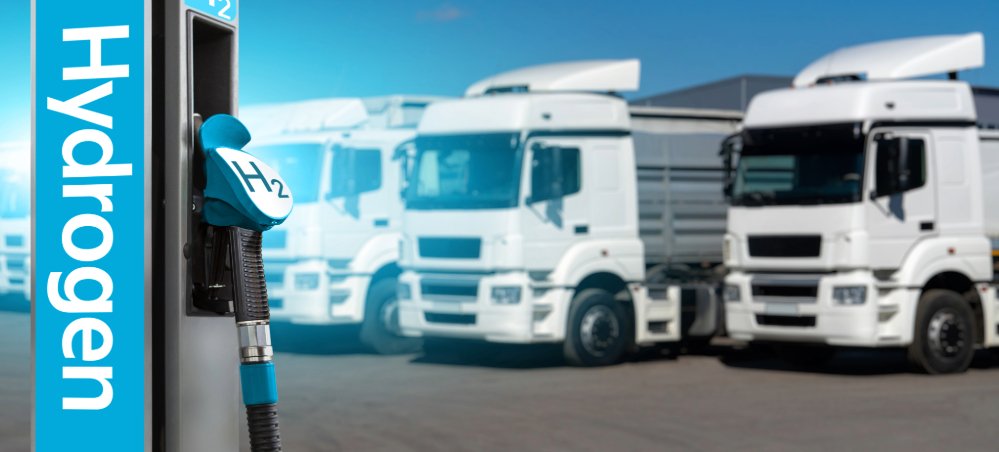Hydrogen Handling: What’s the story behind your Hydrogen journey?
According to the Hydrogen Council, demand for clean, renewable hydrogen could make up as much as 22% of the global energy demand by 2050.
As a clean energy source, hydrogen has the potential to significantly reduce greenhouse gas emissions, especially in sectors that are traditionally hard to electrify.
However, the journey of hydrogen from production to the pump involves several unique challenges and considerations.
Dispenser fuel provider, Dover Fueling Solutions® delve into the intricacies of hydrogen handling, exploring how it is produced, transported, and stored and addressing the safety aspects of using hydrogen as a fuel.
Production of Hydrogen
Hydrogen can be produced through various methods, the most common being natural gas reforming and electrolysis. Natural gas reforming involves reacting natural gas with steam to produce hydrogen, while electrolysis uses electricity to split water into hydrogen and oxygen. The latter method is particularly promising when powered by renewable energy sources, as it results in zero carbon emissions.
Distribution of Hydrogen
Transporting hydrogen from production sites to end-users is a complex and costly process. There are three primary methods of hydrogen distribution: pipelines, tube trailers, and tankers. Each method has its own set of challenges and costs.
Pipelines: While pipelines are an efficient way to transport large volumes of hydrogen over long distances, the initial infrastructure investment is substantial. Additionally, hydrogen can cause embrittlement in steel pipelines, necessitating the use of specialized materials.
Tube Trailers: These are high-pressure containers mounted on trailers, used for transporting hydrogen in gaseous form. This method is flexible and suitable for shorter distances but is limited by the volume that can be transported at a time.
Tankers: For liquid hydrogen, cryogenic tankers are used. These tankers maintain hydrogen at extremely low temperatures (-253°C) to keep it in liquid form. While this method allows for the transport of larger quantities, it is energy-intensive and expensive due to the need for constant refrigeration.
Challenges in Distribution
One of the key challenges in hydrogen distribution is the high cost, regardless of the method used.
The logistics involved in transporting hydrogen, whether as a gas or liquid, add to the complexity and expense.
Furthermore, the infrastructure for hydrogen distribution is still in its nascent stages, requiring significant investment and development.
Safety of Hydrogen Transport
Despite the challenges, hydrogen is generally considered safe to transport compared to traditional fuels.
Hydrogen’s properties, such as its tendency to disperse quickly in case of a leak, reduce the risk of fire or explosion.
However, safety protocols and proper handling are crucial to mitigate any potential risks.
Hydrogen Storage
Hydrogen can be stored in several ways, each with its own advantages and drawbacks.
Compressed Gas: Hydrogen is stored in high-pressure tanks. This method is relatively straightforward but requires robust containment systems to handle the high pressures involved.
Liquid Hydrogen: Storing hydrogen as a liquid requires maintaining it at cryogenic temperatures (-253°C). While this allows for higher energy density, the energy required for refrigeration and the potential for boil-off losses make it less efficient.
Solid-State Storage: Hydrogen can also be stored in solid materials, such as metal hydrides. This method is still under research and development but promises higher safety and energy density.
Efficiency and On-Site Production
To improve the efficiency of hydrogen distribution and reduce costs, refueling stations can produce hydrogen on-site via electrolysis. This approach eliminates the need for long-distance transport and can be powered by renewable energy sources, further enhancing the sustainability of hydrogen as a fuel.
Conclusion
Hydrogen fuel holds great promise for a sustainable energy future, but its journey from production to the pump involves several challenges.
Efficient and safe handling, transportation, and storage are crucial to realizing the full potential of hydrogen.
As technology advances and infrastructure develops, hydrogen is poised to play a significant role in achieving net-zero emissions and transforming the energy landscape.

